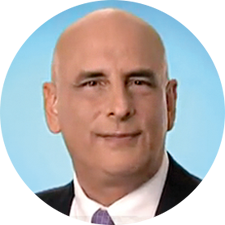Like muscle sprains, concussions vary in severity, from mild to moderate to severe. Considered a mild traumatic brain injury, a concussion can last hours, days, or even weeks. If the symptoms of a concussion continue beyond a week or two, the severity may increase to post-concussion syndrome or even mild traumatic brain injury (mTBI). Resting alone may not be enough and can actually lead long-term negative consequences.
The brain floats unattached inside the skull that has ridges and shelf-like areas. The brain is a delicate organ, similar to the consistency of soft butter or slightly-set gelatin. Any sudden movement with force can result in the brain sliding back and forth which can cause temporary and permanent cognitive damage.
Cognitive refers to conscious mental activities such as thinking, reasoning, understanding, learning, memory, language, coordination, and emotion.
The most vulnerable areas of the brain are the frontal and temporal sides (lobes) due to their anatomy and proximity to the skull.
A concussion may occur in any or all of the following scenarios: Head to head contact, head to object contact, head to ground contact, head to body part contact and non-head contact due to sudden change in direction, i.e. Whiplash.
The brain injury is located where the brain was hit, point of contact.
Brain injury when there is no direct impact to the head. The brain sits inside the skull, unattached, and can slide back and forth. With enough force, ie. whiplash, the brain can be injured on both the “coup” side and the “contra-coup” side:
Concussion resulting from a sudden head twist, temporarily separating the brain stem and spinal cord. This kind of impact can sever the Corpus Callosum, which is the connection tissues between two brain hemispheres, affect the brain stem and cerebellum.
This is the worst type of concussion injury, associated with the most serious neurological injuries.
The helmet can prevent injury to the skull, but not the brain. The brain is a soft-tissue, like butter, unattached and encased in fluid. A whiplash effect can result in concussion even while wearing a helmet and when no contact is sustained.
Pathophysiology explains the affects of a concussion or brain injury to the physical brain. We look at traumatic injuries from macroscopic, microscopic and molecular views.

This is my particular speciality area. I am one of only a very few neurologists in the US that study the physiology of the brain and related behaviors, called cognitive neurology.
Harry Kerasidis, M.D. "The Brain Doctor"
Tissue Changes
When the head sustains a brain injury, the membranes of the brain cells stretch, and lose their ability to regulate the environment of the cell. The membranes get “leaky” preventing the brain cells from working properly, leading to dysfunction which can affect behavior, concentration, memory and other cognitive dysfunction.
Additionally, brain trauma increases the metabolic demand -- or energy -- necessary to repair the brain and regain the equilibrium inside the cell or neuron.
Brain trauma causes changes in the neurons, preventing the brain from working normally, including:
Inability to regulate electrolytes which prevents the brain cells from operating properly. In the brain’s natural or healthy state, the brain cell maintains the balance of salts and electrolytes inside and outside the cell. It takes energy to maintain that balance. When the brain is damaged, the membrane of the cell leaks in potassium while sodium leaks out. Therefore, the cell has to expend more energy to maintain the energy than before. The effect is the brain cell doesn’t work properly in that particular region. For example, if the brain damage and leaky electrolyte balance occurs in the area responsible for memory, then the result is short- and possibly long-term memory loss.
Releasing of toxic excitatory neurotransmitters such as “glutamate” which is toxic to the cell. Although this naturally occurs for proper brain function, when there’s too much going on as a result of brain trauma, then it results in dysfunction and injury to the brain cell.
Increased metabolic energy demands to assist with the cell recovery. These injured cells have a harder time getting enough sugar and struggle to repair themselves (Glycolysis). Lactic acid also can build up as a result of the trauma, which is further toxic to the brain cells (Local lactic acidosis).
In fact, the best and first thing to do is give the concussed brain rest.